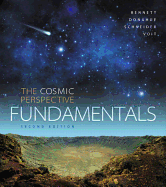Astrophysics at Rutgers • Department of Physics and Astronomy • Rutgers University

| Course Description | Lecture Schedule |
| Sakai | Text |
| Homework | iClickers |
| Examinations | Grades |
| Interactive Demos | Astronomy Websites |
| Students with Disabilities | SAS Class Policies and Resources |
| Public Observing |
In this course we will examine the structure and evolution of stars, the properties of galaxies, and the past, present, and future of the Universe. Astronomy is arguably the oldest science, with roots going back millennia. However, most of what we know about the above topics was learned in just the last century and the surprising discovery that the rate of expansion of the universe is currently increasing occurred just 18 years ago. Astronomers today have a detailed knowledge of stars and the exotic endpoints of their evolution -- white dwarfs, neutrons stars, and black holes. They understand the broad outlines of how stars and galaxies form and the history of the universe as a whole. Science is not just a static body of facts, but also the process by which those facts are discovered and then arranged into coherent models. We will use this process to help avoid being buried in the avalanche of facts discovered in the last 100 years.
There are no college-level prerequisites for this course, but typical high school algebra and science preparation are assumed. The companion course, Ph 109 (taught this semester by Prof. Croft), covers the historical foundations of astronomy and our own and other solar systems. The two courses are complementary and independent; you can take one or both, and in either order. Note that Ph 109 and 110 are intended for non-science majors. Students with college-level math and science credits should consider taking Ph 341/342 instead. These courses cover much of the same material as Ph 109/110, but at a more advanced level.

The textbook for Ph 109 is The Cosmic Perspective: Fundamentals, 2nd edition by Bennett et al. (Addison-Wesley, ISBN 978-0-13-388956-7). Our class covers chapters 1-3, 8-14, parts of chapter 15, and some of the "tools of science" from the remaining chapters. The textbook is available at the Rutgers Bookstore or on-line. The first edition of the book (from 2009) is also acceptable.
The textbook is compact, clear, and (reasonably) up-to-date. You are responsible only for reading the sections given on the lecture schedule, though those with a strong interest in astronomy should be able to enjoy the whole book. Lectures will be more accessible if you have read the appropriate part of the book before class. A few equations are included in the text. You will not be asked to perform calculations more complex than simple proportionalities in this class.
We will use the iClicker classroom response system for in-class activities and quizzes. You can either use iClicker Reef on a smart phone, tablet, or laptop or buy an iClicker remote. Any of the original iClicker, iClicker+, or the second-generation iClicker 2 remotes are fine as we will not use any of the new features. You can set up an iClicker Reef account and purchase a subscription at iclicker.com. Remotes can be purchased a the bookstore or online. Once you acquire your iClicker Reef account or iClicker remote, you should register it through Sakai, using the "iClicker" tab on the left-hand side of your "My Workspace".
You get partial credit for any answer to an i>clicker question, whether correct or incorrect, and full credit for the correct answer. I will sum the scores if there is more than one question in a lecture and will drop the lowest 5 of your daily sums in calculating your grade.
Homework will be assigned, done, and graded weekly using Sakai. Homework sets are due Monday nights (5 AM Tuesday) on the dates given in the class calendar (first date: February 3). They will become available a week before they are due and scores and correct answers will become available immediately after the deadline passes. No late homework submissions will be accepted. However, I will drop the lowest two out of the 12 homeworks when calculating your grade.
It can be beneficial to discuss homework questions with your fellow students, but your submitted answers must be your own. Simply asking a classmate for the answer to a problem is exploitation, not discussion. Representing someone else's work as your own is a serious infringement of academic integrity that is reportable to your College Dean.
There will be a midterm and a final exam. The midterm will be held in place of class in Scott Hall 135 on Thursday, March 12. The final will be on Monday, May 11, 9:30 - 11:00 AM in Scott Hall 135. There will be make-up midterm and final exams for those who have an excused absence. Both exams will be multiple choice, computer graded, and closed book/laptop/phone. Material from the text, lectures, and homework assignments will be used in selecting exam questions. You must bring a photo ID and a pencil to the exams.
Your course grade will be determined by: midterm -- 30%, final -- 30%, homework -- 30%, and your in-class i>clicker responses -- 10%. As it is easier to obtain a high score for the homework, it is impossible to get a good overall grade without a good homework score. No extra-credit assignments will be offered.
Students with disabilities are welcome in this class. Please show me your Letter of Accomodations early in the semester so that we can make the necessary arrangements for you to have a successful learning experience. See this page for more information and links.
This page describes SAS-wide policies on absences, academic integrity, and electronic devices. It also provides links to student wellness services.
Members of the Rutgers University community and the general public are invited to observe the skies through the 20-inch telescope of the Schommer Observatory on the second, third, and fourth Thursday of every month, weather permitting.
Observing will be canceled for that night if the skies are cloudy at the beginning of the observing session. Please see the observatory home page for information about the next night.
Created January 20, 2020